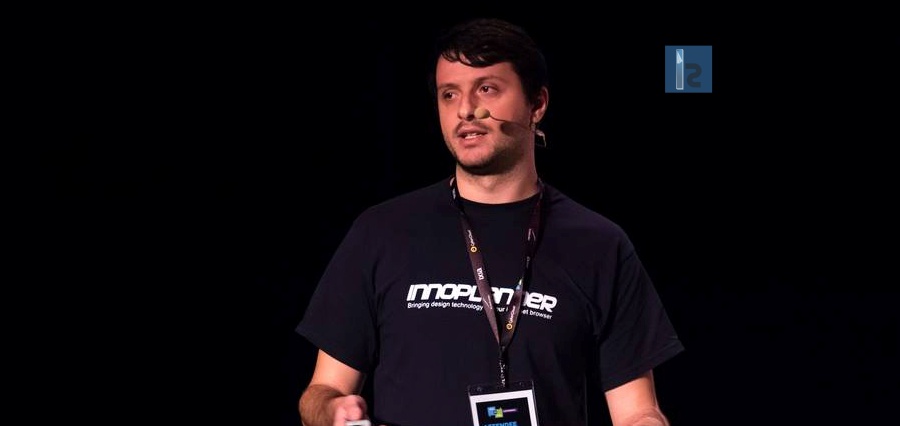Modern technology has been going through disruptive changes over the years. Adaptive augmented reality mixed in virtual reality can help to create a number of prototypes that allow you to have a clear vision of your project. Nowadays, you can search for any animal over the internet and can have a 3D rendered model of that animal right in your living room interacting with you through your smartphones.
Augmented reality and virtual reality are on the verge of emerging as mainstream technologies that will sustain an enduring impact. Digital Artflow, a company that develops creative prototype with these immersive technologies, provides a more direct experience by enabling to walk, fly and interact with their prototypes, either in an AR or VR environment.
Below are the highlights of the interview conducted between Digital Artflow and Insights Success:
What led to the inception of the company?
Initially, we started as a small group of freelancers and started with various web development projects. Later, we started developing visual applications for sales and customer engagement. We expanded our portfolio and began to specialize in 2D and 3D applications, slowly building a path towards product and service simulation applications, like visual product configurators, floor planning solutions and integration with various standardized platforms. In 2009, we decided to start the company and then later offering development services for VR/AR applications.
Describe your company and its cutting-edge VR/AR services which address all the needs of your customers.
Currently, Digital Artflow has a few pre-built software solutions like Simplio3D (online product configurator) and InnoPlanner (floor planning system) that support both VR and AR to meet client necessities. Initially, we started utilizing Virtual Reality technology when customers requested an extension to their already implemented 3D product configurators using our prebuilt solutions. Customers wanted to offer their potential customers an immersive product experience using VR headsets. Therefore, most of our VR services are found in the development of ways to enable web applications to support VR when needed directly from an internet browser without the need for native apps. We also work with AR terminals, where we offer the possibility of web applications to track 3D products in real space, like furniture, jewelry, and clothing. In the last 2 years, we started to develop native applications for Virtual Reality using Unity for a few customers.
Could you throw some light on your mission and vision statement?
Digital Artflow continues offering a compelling visual application for all industries and based on our experience we want to offer the best solutions using cutting-edge technology. We aim to transform the CPQ industry by introducing and integrating VR/AR technology with the known ERP/eCommerce platforms. Simultaneously, we want to preserve and grow our team values, culture, and ethics. These are the key to consolidate long-term healthy and productive relationships both internally and externally reflecting the universal trustworthy level of our agency.
How does your AR/VR services unique from the other companies’ offerings?
We are one of the few agencies focusing on WebVR and we connect VR/AR with several e-commerce platforms and we intend to further integrate the technology with other e-commerce platforms, web applications, and ERP systems.
Give a detailed description of the featured person’s influence over the company and the industry.
Dan Stefan is primarily responsible for having the entire team under one umbrella, and the umbrella is Digital Artflow. He knows how to motivate and establish some general directions when it comes to community, innovation, and expertise within the agency. Last but not least, he knows how to convey his enthusiasm to others, which helps him a lot to stay connected with his team.
How is AR/VR technology disrupting the entertainment and gaming industry?
We are not focused on developing AR/VR for the entertainment and gaming industry, but we have witnessed a steady growth of applications using AR/VR technology in the last 2–3 years. In general, AR/VR is beginning to disrupt all major industries, and Digital Artflow is happy to be in this technological wave.
What technologies are you leveraging to make your services resourceful?
We are using programming languages and frameworks for web development like PHP, JavaScript, three.js, pixi.js, React, HTML/CSS, SQL and for the development of VR/AR applications we use: WebVR, AR.js, and Unity.
What are your company’s future aspirations? What strategies are you undertaking to achieve those goals?
At Digital Artflow, we want to offer not only quality services and products but also an excellent experience between the client and the team. We want to keep the passion and enthusiasm within the team to innovate and create fun and wow services for our customers. To achieve this easily, we have built our own culture after which we work to reach our goals.
Testimonials
“They hold a deep understanding of all the latest trends and technology available to produce a cutting-edge product. Most importantly, they are patient, flexible and open to suggestions.”– Brian Berman, CEO, Expo90.
“I feel the need to share how pleased I was with their services, from the easy communication we had about my project, to the promptitude and the accuracy of the work. Besides that, I was very surprised by the fact that we covered not only design angles but marketing ideas too. I feel satisfied with the final product that we, together, came up with.”– Don Tregartha, Creative Director, The Communications Agency

Dan Stefan | Co-Founder | Digital Artflow

